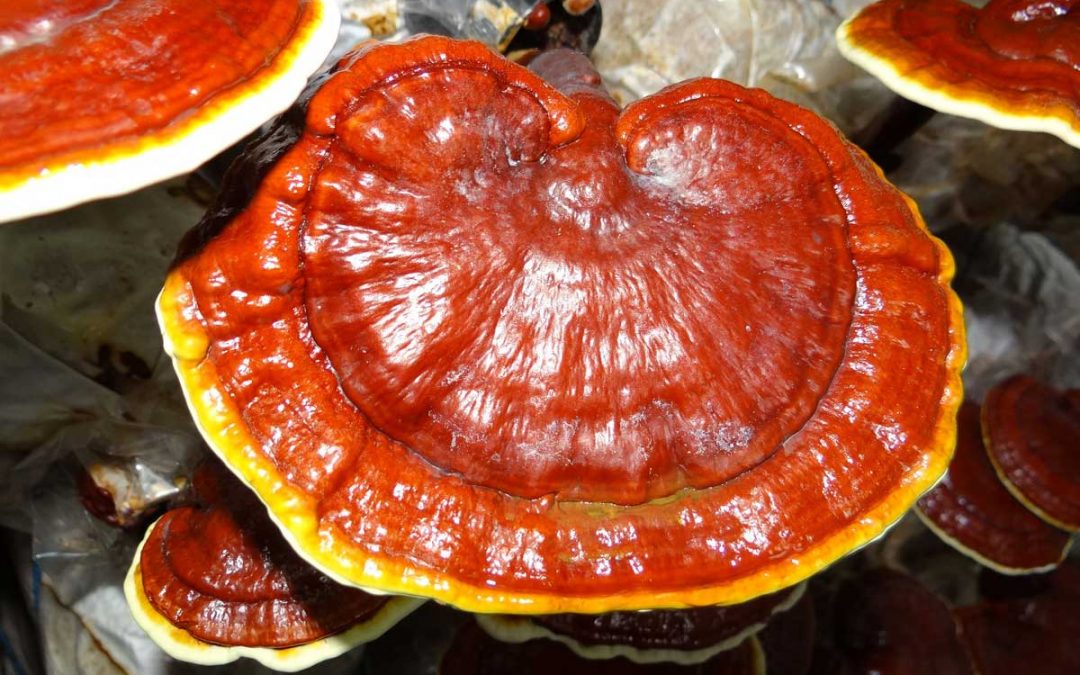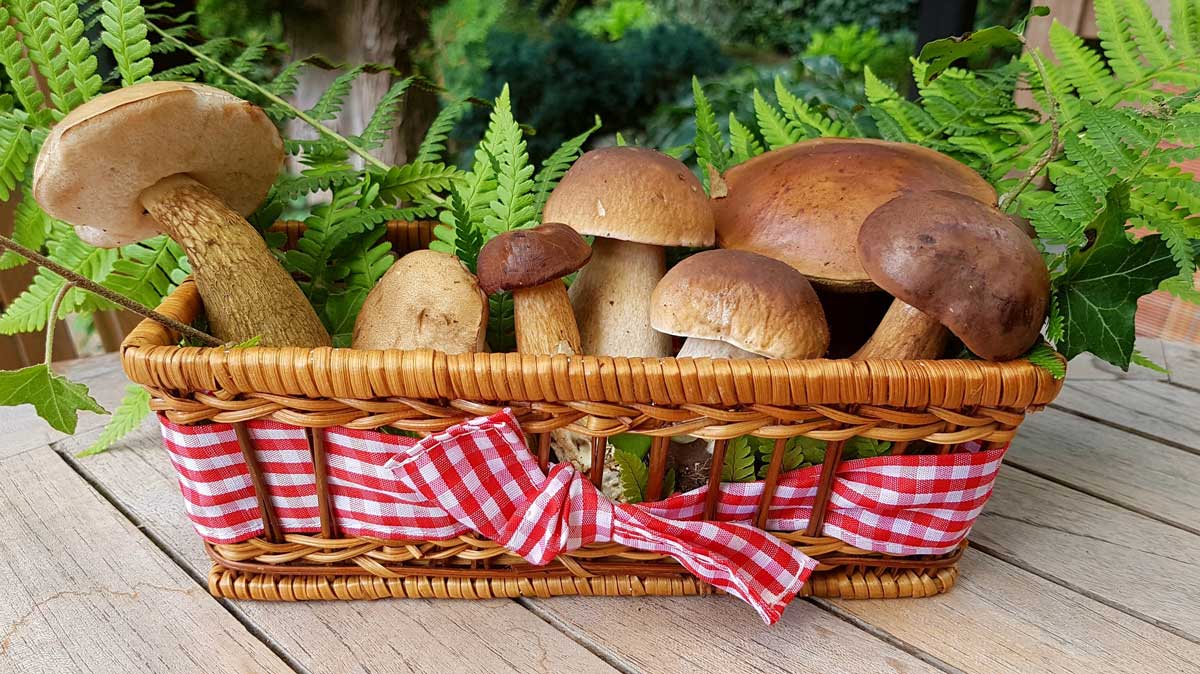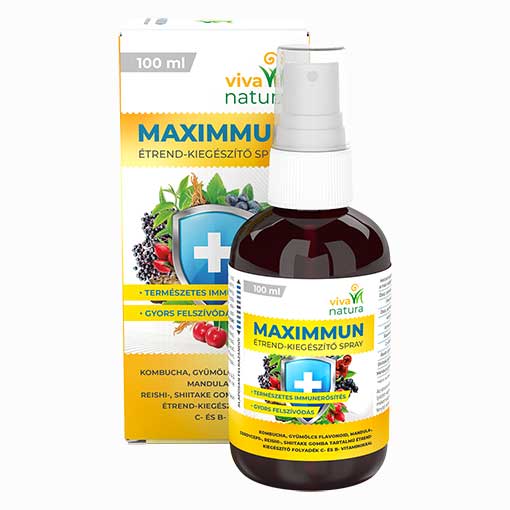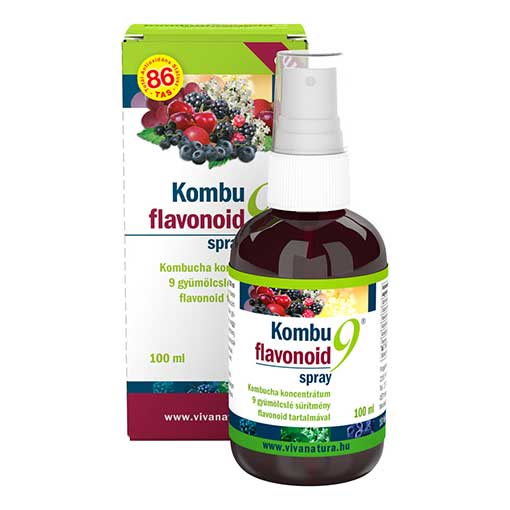Latin név: Ganoderma lucidum
Egyszerre támogatja a szervezet védekezőképességét és idegrendszerét, s kiemelkedő méregtelenítő hatással bír. Szabad gyökfogó, azaz antioxidáns, csillapítja a gyulladást, az allergiát. A daganatsejtekre gátló hatású, csökkenti a vérnyomást, a vércukor- és a koleszterin-vérzsírszintet. Lazítja a simaizmokat, gutaütésben (stroke) már régi idők óta alkalmazzák. A Reishi segítséget nyújthat az immunrendszer működésének javításában, daganatos megbetegedések esetén kiegészítő terápiaként, allergia, reumás ízületi gyulladás kezelésben, Alzheimer és Parkinson kór, májbetegségek, magas vérnyomás, álmatlanság és szorongás kezelésében.
A vörösbarna színű pecsétviaszgomba földalatti fadarabokon és korhadt fatönkön élő gyökérélősködő. Már az ősi gyógyászatból ismert sokoldalú jótékony hatása miatt. Az ún. adaptogén, intelligens gyógynövények közé tartozik, hatásában tökéletesen alkalmazkodik az adott pillanatnyi igényekhez: csak akkor hat, ha szükség van rá, s csak annyira, amennyire az kívánatos. Minden 300 gyógynövényből csupán egy rendelkezik ezzel a tulajdonsággal.
A Reishi fontos hatóanyagai
- Szerves germánium: akár másfélszeresére növelheti a vér oxigénfelvevő képességét, javíthatja az emésztést, megelőzheti a szövetek elhalását.
- Poliszacharidok: erősíthetik a szervezet immunrendszerét, megölik a vírusokat.
- Keserű íz: valószínűsíthetően a germánium és a poliszacharidok kapcsolatából adódik. Egyes növények tartalmazzák az egyiket vagy a másikat, de a ganoderma mindegyiknél hatékonyabb.
- Adenozin: megakadályozza a vérrögök kialakulását, csökkenti a koleszterinszintet és a zsírtartalmat, segíti a vér szabad áramlását, fejleszti az adrenalin mirigy funkcióját, hogy egyensúlyban tartsa a hormonszintet, szabályozza az emésztést és megfelelő állapotban tartsa a vér PH-szintjét.
- Terpenoidok: erősítik az emésztőrendszert és felépítik az antigének által okozott allergiák elleni védelmet. Csökkentik a koleszterinszintet és aktiválják a sejtek atommagját.
- Ganoderic esszencia: megfiatalítja a szöveteket, optimalizálja a test funkcióit és fiatalságát, legyőzi a bőrbetegségeket és megszépíti a bőrt.
Forrás:
- Huang K. The Pharmacology of Chinese Herbs. 2nd ed. New York: CRC Press; 1999.
- Chen HS, Tsai YF, Lin S, et al. Studies on the immuno-modulating and anti-tumor activities of Ganoderma lucidum (Reishi) polysaccharides. Bioorg Med Chem. Nov 1 2004;12(21):5595-5601.
- Gao Y, Zhou S, Wen J, et al. Mechanism of the antiulcerogenic effect of Ganoderma lucidumpolysaccharides on indomethacin-induced lesions in the rat. Life Sci. Dec 27 2002;72(6):731-745.
- Hsu MJ, Lee SS, Lin WW. Polysaccharide purified from Ganoderma lucidum inhibits spontaneous and Fas-mediated apoptosis in human neutrophils through activation of the phosphatidylinositol 3 kinase/Akt signaling pathway. J Leukoc Biol. Jul 2002;72(1):207-216.
- Wang SY, Hsu ML, Hsu HC, et al. The anti-tumor effect of Ganoderma lucidum is mediated by cytokines released from activated macrophages and T lymphocytes. Int J Cancer. Mar 17 1997;70(6):699-705.
- Wachtel-Galor S, Szeto YT, Tomlinson B, et al. Ganoderma lucidum (’Lingzhi’); acute and short-term biomarker response to supplementation. Int J Food Sci Nutr. Feb 2004;55(1):75-83.
- Wachtel-Galor S, Tomlinson B, Benzie IF. Ganoderma lucidum (“Lingzhi”), a Chinese medicinal mushroom: biomarker responses in a controlled human supplementation study. Br J Nutr. Feb 2004;91(2):263-269.
- Gao Y, Zhou S, Jiang W, et al. Effects of ganopoly (a Ganoderma lucidum polysaccharide extract) on the immune functions in advanced-stage cancer patients. Immunol Invest. Aug 2003;32(3):201-215.
- Shieh YH, Liu CF, Huang YK, et al. Evaluation of the hepatic and renal-protective effects of Ganoderma lucidum in mice. Am J Chin Med. 2001;29(3-4):501-7.
- Noguchi M, Kakuma T, Tomiyasu K, et al. Randomized clinical trial of an ethanol extract of Ganoderma lucidum in men with lower urinary tract symptoms. Asian J Androl. Sep 2008;10(5):777-785.
- Hobbs C. Medicinal Mushrooms. 3rd ed. Loveland (OR): Interweave Press; 1996.
- Tao J, Feng KY. Experimental and clinical studies on inhibitory effect of Ganoderma lucidum on platelet aggregation. J Tongji Med Univ. 1990;10(4):240-243.
- Wang CZ, Basila D, Aung HH, et al. Effects of Ganoderma lucidum extract on chemotherapy-induced nausea and vomiting in a rat model. Am J Chin Med. 2005;33(5):807-815.
- Gill SK, Rieder MJ. Toxicity of a traditional Chinese medicine, Ganoderma lucidum, in children with cancer. Can J Clin Pharmacol. Summer 2008;15(2):e275-285.
- Wang X, Zhao X, Li D, et al. Effects of Ganoderma lucidum polysaccharide on CYP2E1, CYP1A2 and CYP3A activities in BCG-immune hepatic injury in rats. Biol Pharm Bull. Sep 2007;30(9):1702-1706.
- Chen NH, Liu JW, Zhong JJ. Ganoderic Acid me inhibits tumor invasion through down-regulating matrix metalloproteinases 2/9 gene expression. J Pharmacol Sci. Oct 2008;108(2):212-216.
- Li YB, Wang R, Wu HL, et al. Serum amyloid A mediates the inhibitory effect of Ganoderma lucidumpolysaccharides on tumor cell adhesion to endothelial cells. Oncol Rep. Sep 2008;20(3):549-556.
- Mao T, van De Water J, Keen CL, et al. Two mushrooms, Grifola frondosa and Ganoderma lucidum, can stimulate cytokine gene expression and proliferation in human T lymphocytes. Int J Immunother 1999;15(1):13-22.
- Chan WK, Cheung CC, Law HK, et al. Ganoderma lucidum polysaccharides can induce human monocytic leukemia cells into dendritic cells with immuno-stimulatory function. J Hematol Oncol. 2008;1(1):9.
- Noguchi M, Kakuma T, Tomiyasu K, et al. Effect of an extract of Ganoderma lucidum in men with lower urinary tract symptoms: a double-blind, placebo-controlled randomized and dose-ranging study. Asian J Androl. 2008 Jul;10(4):651-8.
- Weng CJ, Yen GC. The in vitro and in vivo experimental evidences disclose the chemopreventive effects of Ganoderma lucidum on cancer invasion and metastasis. Clin Exp Metastasis. 2010 May;27(5):361-9.
- Kim KC, Jun HJ, Kim JS, Kim IG. Enhancement of radiation response with combined Ganoderma lucidum and Duchesnea chrysantha extracts in human leukemia HL-60 cells. Int J Mol Med. 2008 Apr;21(4):489-98.
- Gordan JD, Chay WY, Kelley RK, et al. “And what other medications are you taking?”. J Clin Oncol. 2011 Apr 10;29(11):e288-91.
- Yuen MF, Ip P, Ng WK, Lai CL. Hepatotoxicity due to a formulation of Ganoderma lucidum (lingzhi). J Hepatol. 2004 Oct;41(4):686-7.
- Wanmuang H, Leopairut J, Kositchaiwat C, Wananukul W, Bunyaratvej S. Fatal fulminant hepatitis associated with Ganoderma lucidum (Lingzhi) mushroom powder. J Med Assoc Thai. 2007 Jan;90(1):179-81.
- Wanachiwanawin D, Piankijagum A, Chaiprasert A, et al. Ganoderma lucidum: a cause of pseudoparasitosis. Southeast Asian J Trop Med Public Health. 2006 Nov;37(6):1099-102.
- Zhao S, Ye G, Fu G, Cheng JX, Yang BB, Peng C. Ganoderma lucidum exerts anti-tumor effects on ovarian cancer cells and enhances their sensitivity to cisplatin. Int J Oncol. 2011 May;38(5):1319-27.
- Pillai TG, John M, Sara Thomas G. Prevention of cisplatin induced nephrotoxicity by terpenes isolated from Ganoderma lucidum occurring in Southern Parts of India. Exp Toxicol Pathol. 2011 Jan;63(1-2):157-60.
- Chu TT, Benzie IF, Lam CW, et al. Study of potential cardioprotective effects of Ganoderma lucidum(Lingzhi): results of a controlled human intervention trial. The British journal of nutrition. 2012 Apr;107(7):1017-27.
- Jin X, Ruiz Beguerie J, Sze DM, Chan GC . Ganoderma lucidum (Reishi mushroom) for cancer treatment. Cochrane Database Syst Rev. 2012 Jun 13;6:CD007731.
- Chang CJ, Chen YY, Lu CC, et al. Ganoderma lucidum stimulates NK cell cytotoxicity by inducing NKG2D/NCR activation and secretion of perforin and granulysin. Innate Immun. 2014 Apr;20(3):301-11.
- Sun LX, Lin ZB, Duan XS, et al. Enhanced MHC class I and costimulatory molecules on B16F10 cells by Ganoderma lucidum polysaccharides. J Drug Target.2012 Aug;20(7):582-92.
- Boh B, Berovic M, Zhang J, Zhi-Bin L. Ganoderma lucidum and its pharmaceutically active compounds. Biotechnol Annu Rev. 2007;13:265-301.
- Paterson RR. Ganoderma – a therapeutic fungal biofactory. Phytochemistry. 2006 Sep;67(18):1985-2001.
- Liang Y, He M, Fan X, et al. An abnormal elevation of serum CA72-4 by Ganoderma lucidum spore powder. Ann Clin Lab Sci. 2013 Summer;43(3):337-40.
- Joseph S, Sabulal B, George V, Antony KR, Janardhanan KK. Antitumor and anti-inflammatory activities of polysaccharides isolated from Ganoderma lucidum. Acta Pharm. 2011 Sep 1;61(3):335-42.
- Jin H, Jin F, Jin JX, et al. Protective effects of Ganoderma lucidum spore on cadmium hepatotoxicity in mice. Food Chem Toxicol. 2013 Feb;52:171-5.
- Klupp NL, Chang D, Hawke F, et al. Ganoderma lucidum mushroom for the treatment of cardiovascular risk factors. Cochrane Database Syst Rev. 2015;2:CD007259.
- Ko KK, Murthee KG, Koh TH, et al. Reishi (lingzhi) ingestion mistaken for persistent Clonorchis infection. Pathology. Oct 2014;46(6):576-578.
- Sun LX, Li WD, Lin ZB, et al. Protection against lung cancer patient plasma-induced lymphocyte suppression by Ganoderma lucidum polysaccharides. Cell Physiol Biochem. 2014;33(2):289-299.
- Oka S, Tanaka S, Yoshida S, et al. A water-soluble extract from culture medium of Ganoderma lucidum mycelia suppresses the development of colorectal adenomas. Hiroshima J Med Sci. Mar 2010;59(1):1-6.
- Yan B, Meng X, Shi J, et al. Ganoderma lucidum spore induced CA72-4 elevation in gastrointestinal cancer: a five-case report. Integr Cancer Ther. Mar 2014;13(2):161-166.
- Klupp NL, Kiat H, Bensoussan A, et al. A double-blind, randomised, placebo-controlled trial of Ganoderma lucidum for the treatment of cardiovascular risk factors of metabolic syndrome. Sci Rep. Aug 11 2016;6:29540.
- Jin X, Ruiz Beguerie J, Sze DM, et al. Ganoderma lucidum (Reishi mushroom) for cancer treatment.Cochrane Database Syst Rev. Apr 05 2016;4:Cd007731.
- Santesso N, Wieland LS. A Summary of a Cochrane Review: Ganoderma lucidum (Reishi mushroom) for the treatment of cancer. Eur J Integr Med. Oct 2016;8(5):619-620.







